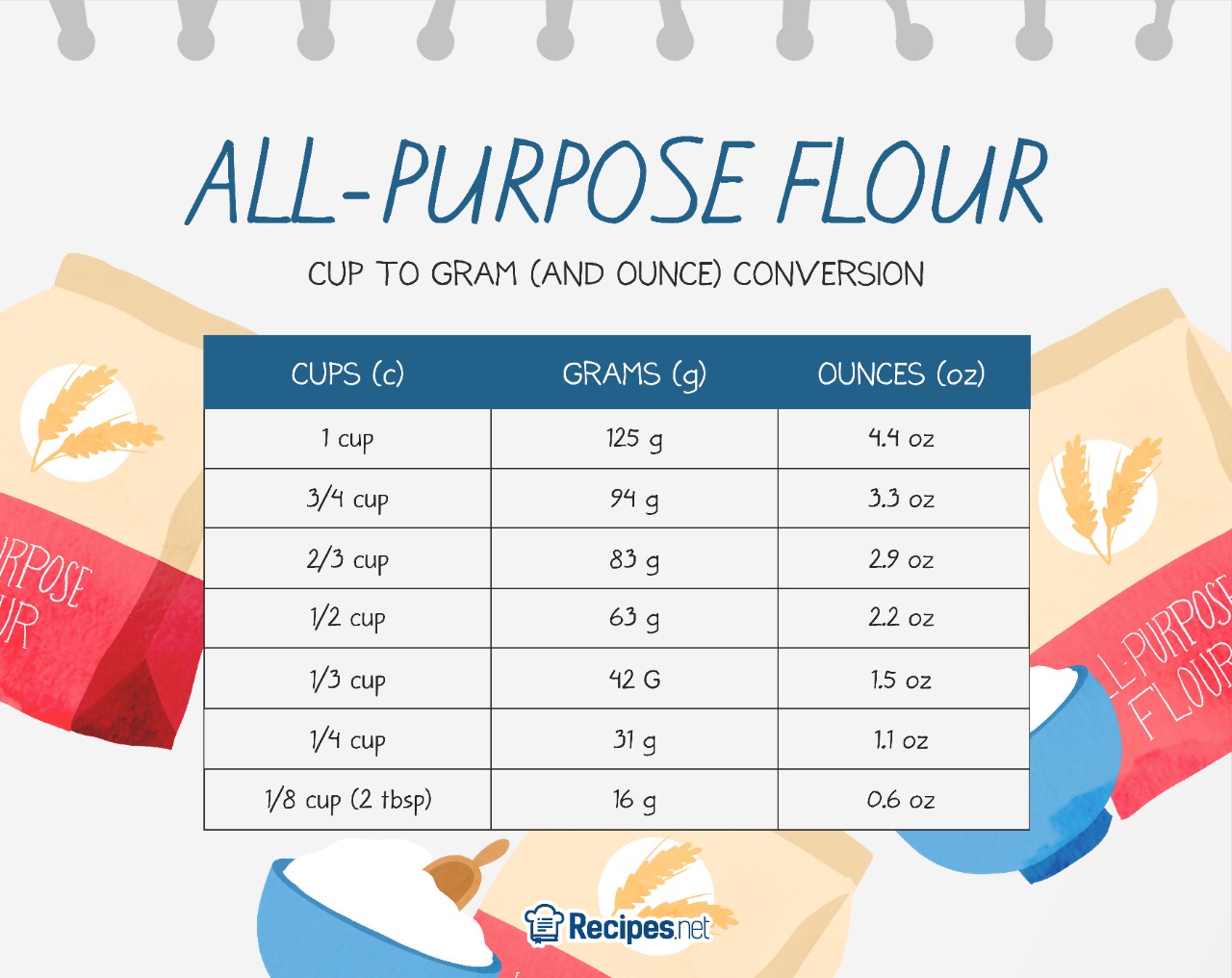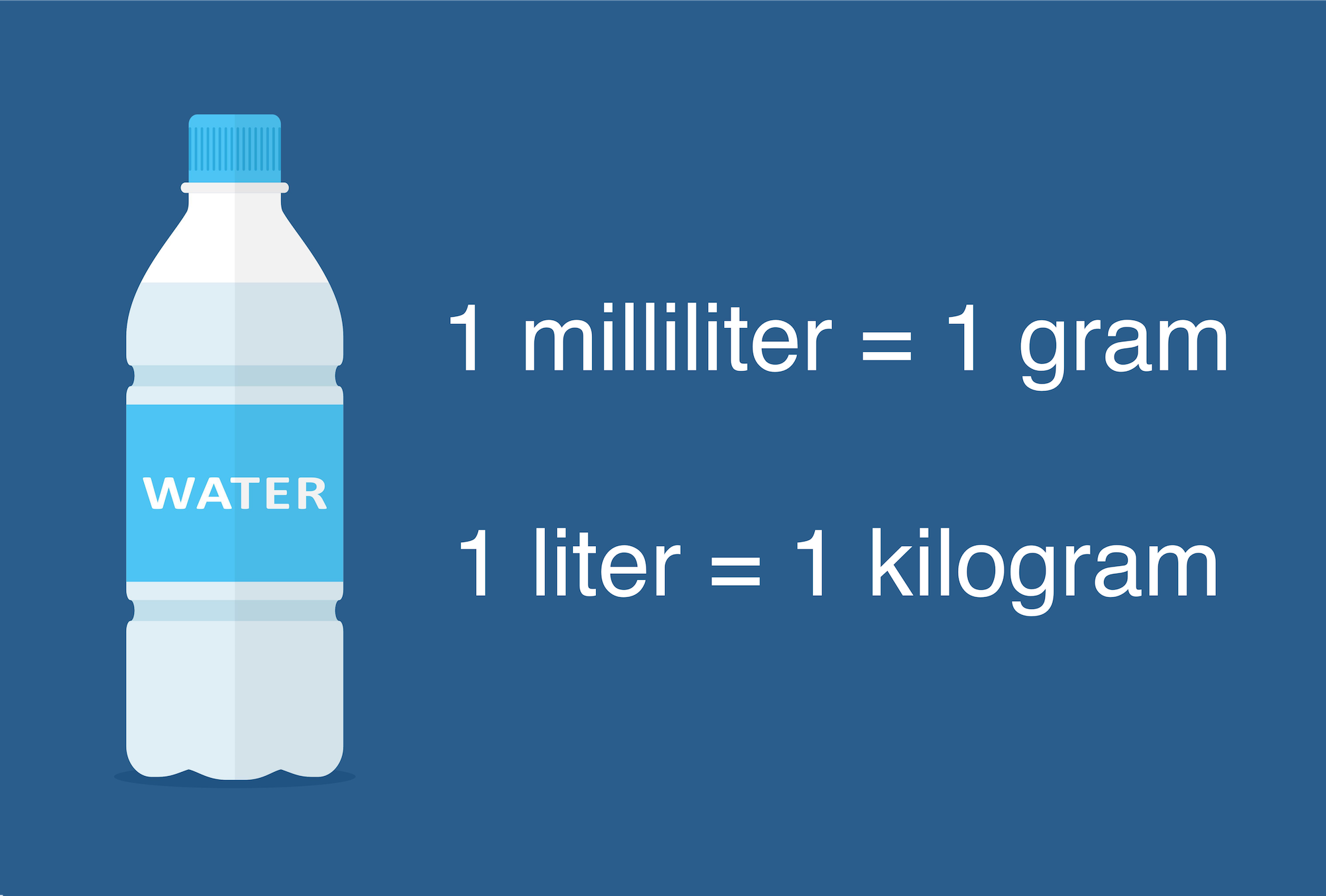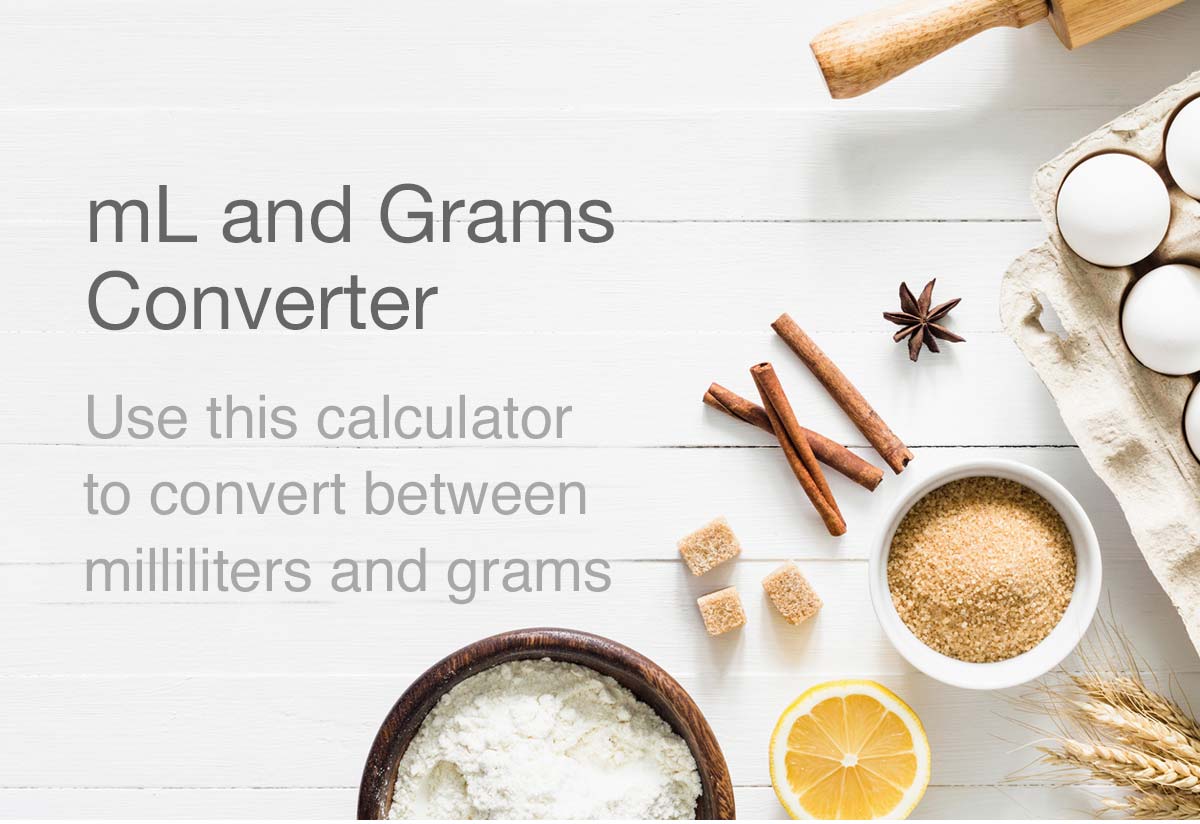-to-Grams-(g)-Step-1.jpg/aid2931004-v4-728px-Convert-Milliliters-(mL)-to-Grams-(g)-Step-1.jpg)
3 Easy Ways to Convert Milliliters (mL) to Grams (g) wikiHow
1 gram = 1 ml (water at 4 °C / 39.2 °F) Even if the water's temperature is a bit higher - like room temperature (20-25 °C or 68-77 °F) - we can still say that 1 gram equals approximately 1 ml. Have a look at the graph to check how the density of water (and ice) changes with the temperature:

Grams to Cups Guide For Baking (With Conversion Chart!)
One hundred grams of oil to milliliters. Sample task: convert 100 grams of vegetable oil to milliliters. It is known that the density of vegetable oils is about 0.96 grams per ml. Solution: Formula: g * 0.96 = ml. Calculation: 100 g * 0.96 = 96 ml. End result: 100 g is equal to 96 ml.

Sugar Conversion Printable US Cups to Grams and Ounces Baking measurements, Baking conversion
1 ml (milliliter) = 1/1000 L (Liter, the official SI unit of volume).Weight of 1 milliliter (ml) of pure water at temperature 4 °C = 1 gram (g) .The gram (British spelling: gramme, abbreviation: g) is a unit of mass in the SI system (metric system). One gram is equal to one thousandth of the kilogram (kg), which is the current SI (Metric system) base unit of mass.

Convert Cups To Grams Grams To Cups Interactive Calculator (Includes cups, grams / Use our
milliliters = grams ÷ density. Thus, the volume in milliliters is equal to the weight in grams divided by the density (in g/mL) of the ingredient, substance, or material. For example, here's how to convert 5 grams to milliliters for an ingredient or substance with a density of 0.7 g/mL. milliliters = 5 g ÷ 0.7 g/mL = 7.1429 mL.
-to-Grams-(g)-Step-12.jpg)
Conversion ml en g Nosogenesis
To convert 300 mL to grams, you multiply 300 mL by the density of what you are converting. The density of water is 1 gram per milliliter (g/mL). Therefore, it is very easy to convert 300 mL of water to grams. Here is how: mL × density = grams 300 × 1 = 300 grams 300 mL = 300 grams
-to-Grams-Step-4.jpg)
3 Gramas Equivale A Quantos Ml EDUCA
1 mL = 1 g Do you want to convert grams to milliliters ? How to Convert Milliliters to Grams By Joe Sexton Reviewed by Ethan Dederick, PhD Since milliliters are a unit of volume and grams are a unit of mass, which are different physical quantities, we need to know one more physical quantity of the ingredient or substance to convert between them.

How To Convert Grams to Milliliters g to mL YouTube
The answer is 1. We assume you are converting between milliliter and gram [water] . You can view more details on each measurement unit: ml or g The SI derived unit for volume is the cubic meter. 1 cubic meter is equal to 1000000 ml, or 1000000 g. Note that rounding errors may occur, so always check the results.

Selected skills
1 milliliters to grams = 1 grams 5 milliliters to grams = 5 grams 10 milliliters to grams = 10 grams 20 milliliters to grams = 20 grams 30 milliliters to grams = 30 grams 40 milliliters to grams = 40 grams 50 milliliters to grams = 50 grams 75 milliliters to grams = 75 grams 100 milliliters to grams = 100 grams Want other units?

Convert Cups To Grams Grams To Cups Interactive Calculator (Includes cups, grams / Use our
Take note of the additional thousandth on the weight unit. As a result, a milliliter must contain 1,000 milligrams, yielding the following formula for mg to ml conversion: mL = mg / 1000. To do the reverse conversion, i.e., how many mg in ml, we rewrite the above equation in terms of mg: mg = 1000 * mL.
-to-Grams-(g)-Step-11.jpg/v4-728px-Convert-Milliliters-(mL)-to-Grams-(g)-Step-11.jpg)
Come Convertire Millilitri (ml) in Grammi 12 Passaggi
1 ml to grams = 0.85211 grams 5 ml to grams = 4.26057 grams 10 ml to grams = 8.52113 grams 20 ml to grams = 17.04227 grams 30 ml to grams = 25.5634 grams 40 ml to grams = 34.08453 grams 50 ml to grams = 42.60567 grams 75 ml to grams = 63.9085 grams 100 ml to grams = 85.21134 grams Want other units?
-to-Grams-(g)-Step-8.jpg/aid2931004-v4-728px-Convert-Milliliters-(mL)-to-Grams-(g)-Step-8.jpg)
3 Easy Ways to Convert Milliliters (mL) to Grams (g) wikiHow
How to convert ml to grams How to convert grams to ml How much is 1 ml in grams? For water, 1 milliliter equals 1 gram. For other ingredients, the weight varies. 1ml of milk weighs 1.04 grams, 1ml of flour weighs 0.53 grams and 1 ml of sugar equals 0.85 grams. Converting between ml and grams for water is a simple 1:1 conversion process.
-to-Grams-(g)-Step-8-Version-4.jpg/aid2931004-v4-728px-Convert-Milliliters-(mL)-to-Grams-(g)-Step-8-Version-4.jpg)
3 Easy Ways to Convert Milliliters (mL) to Grams (g) wikiHow
About Ml to Grams Calculator (Formula) When it comes to working with substances in the laboratory or the kitchen, precise measurements are crucial. Whether you're dealing with chemicals, liquids, or ingredients, converting between different units of measurement can be a common task. One such conversion is from milliliters (ml) to grams (g).

ml to Grams / Grams to ml Conversion
Grams = volume (mL) × density (g/mL) To convert g to mL, divide the weight in grams by the density in g/mL. Milliliters = weight (g) ÷ density (g/mL) The only easy conversion from mL to g is water. Water has a density of 1 g/mL, so one gram of water is equal to one milliliter of water. But for other ingredients, their densities will vary, so.

Pin on Good to know!
300 ml water = 300 g 300 milliliters water = 300 g But what about other stuff and food? In the next section you can find the mass equivalent of 300 ml for some cooking ingredients. At the top of this page is our converter which calculates 300 ml to g for any substance with known ρ. Bookmark us now as ml to grams.
-to-Grams-(g)-Step-12-Version-4.jpg)
3 Easy Ways to Convert Milliliters (mL) to Grams (g) wikiHow
300 Milliliter is equal to 300 Gram. Formula to convert 300 ml to g is 300 * 1 Q: How many Milliliters in 300 Grams? The answer is 300 Milliliters Lastest Convert Queries 21450000 Milliliter to Liters 153 Milliliter to Kilogram 286 Milliliter to Gram 4270 Milliliter to Kilogram 999999000 Milliliter to Gigagram 1133 Milliliter to Kilogram

What is 300ml to grams? 27F Chilean Way
Quick conversion chart of ml to gram 1 ml to gram = 0.85211 gram 5 ml to gram = 4.26057 gram 10 ml to gram = 8.52113 gram 20 ml to gram = 17.04227 gram 30 ml to gram = 25.5634 gram 40 ml to gram = 34.08453 gram 50 ml to gram = 42.60567 gram 75 ml to gram = 63.9085 gram 100 ml to gram = 85.21134 gram Want other units?